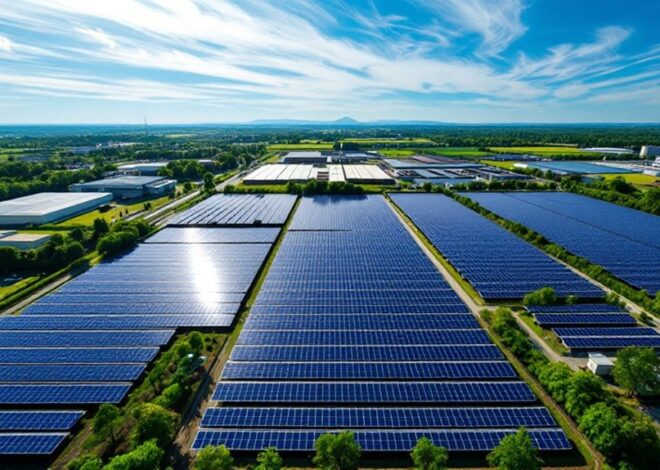
How Solar Innovations Are Changing Energy Markets
Solar innovations are reshaping energy markets in significant ways. Advanced technologies enhance efficiency and affordability, while energy storage solutions stabilize supply. Government policies and decreasing installation costs encourage investment. This shift not only diminishes fossil fuel dependence but also propels job creation and energy independence. As these changes unfold, the implications for traditional energy sources and the broader economy warrant closer examination. What transformations lie ahead in this evolving landscape?
The Rise of Advanced Photovoltaic Technologies
As the demand for renewable energy sources grows, advanced photovoltaic technologies have emerged as a pivotal solution in the shift to sustainable energy markets. Innovations such as bifacial solar panels and multi-junction cells have greatly increased efficiency, allowing for greater energy capture in various environments. These technologies harness sunlight more effectively by utilizing both sides of solar panels and combining multiple layers of materials to absorb different wavelengths of light. Additionally, developments in thin-film solar cells have made installation more versatile and cost-effective. The integration of smart technology also enables real-time monitoring and optimization of energy output. Collectively, these advancements are transforming the solar landscape, making photovoltaic systems a more competitive and reliable source of energy in the global market. Furthermore, renewable energy capacity has increased dramatically over the past decade, underscoring the rapid evolution of this sector.
Energy Storage Solutions: Key to Solar Integration
Energy storage solutions play an essential role in the effective integration of solar energy into the grid. Recent advancements in battery technology have enhanced the capacity and efficiency of energy storage systems, facilitating better management of solar power. Additionally, these innovations contribute to grid stability, allowing for a more reliable energy supply despite fluctuations in solar generation. Moreover, sustainable practices like energy storage are critical for maximizing the benefits of renewable energy integration.
Advancements in Battery Technology
While the integration of solar power into energy grids presents challenges, advancements in battery technology are emerging as vital solutions. Innovations in lithium-ion batteries, flow batteries, and solid-state technologies have greatly improved energy storage capabilities. These advancements enable solar energy to be harnessed and stored efficiently, addressing the intermittent nature of solar generation. Enhanced battery systems provide longer life cycles, faster charging times, and greater energy density, making them more viable for widespread adoption. In addition, developments in recycling methods and sustainable materials are contributing to an environmentally friendly battery ecosystem. Consequently, these technological strides facilitate increased solar capacity and foster a more resilient energy landscape, positioning battery technology as a key player in the shift to renewable energy sources.
Grid Stability Enhancements
Significant advancements in energy storage solutions are essential for enhancing grid stability in the context of solar integration. As solar energy generation is inherently intermittent, effective storage technologies play a key role in balancing supply and demand. Innovations such as lithium-ion batteries, flow batteries, and emerging solid-state technologies are increasingly employed to store excess energy generated during peak sunlight hours. These advancements not only facilitate a smoother shift between solar output fluctuations but also contribute to frequency regulation and voltage stability within the grid. Additionally, energy storage systems enable utilities to defer infrastructure investments by reducing the need for additional peaking power plants. Overall, enhanced energy storage capabilities are critical for supporting the growing reliance on renewable energy sources and ensuring reliable grid operations.
Smart Grids and Their Impact on Energy Distribution
As advancements in technology continue to reshape the energy landscape, smart grids emerge as a significant development in the efficient distribution of electricity. These systems integrate digital communication technology with traditional power networks, enabling real-time monitoring and management of energy flow. By optimizing the distribution of electricity, smart grids enhance reliability and reduce waste, facilitating the incorporation of renewable energy sources like solar power. They allow for better demand response, empowering consumers to manage their energy usage more effectively. Additionally, smart grids contribute to grid resilience, minimizing outages and enhancing security against cyber threats. Overall, their implementation signifies a transformative shift toward a more sustainable and responsive energy infrastructure, essential for modern energy markets. Practicing mindfulness can help individuals become more aware of their energy consumption and make informed choices that contribute to a sustainable future.
Policy Changes Driving Solar Adoption
Policy changes play a vital role in accelerating solar adoption across various markets. Government incentives and subsidies, along with evolving regulatory frameworks, have created a more favorable environment for solar investments. Additionally, international collaborations on energy policies further enhance the global push towards renewable energy solutions. As organizations adapt to these changes, remote work trends are influencing how solar companies operate and engage with their workforce.
Government Incentives and Subsidies
While the shift to solar energy has gained momentum globally, government incentives and subsidies have played an essential role in accelerating its adoption. Various nations have implemented financial incentives, such as tax credits, rebates, and grants, to lower the initial costs associated with solar installations. These measures not only encourage residential and commercial investments but also stimulate job creation within the solar sector. Additionally, feed-in tariffs guarantee fixed payments for solar energy producers, ensuring a stable income stream. Countries with robust incentive programs often experience significant increases in solar capacity, demonstrating the effectiveness of these policies. Overall, government support has been vital in making solar energy a viable alternative to traditional fossil fuels, driving both innovation and market growth.
Regulatory Framework Developments
With governments increasingly recognizing the importance of renewable energy, regulatory frameworks have evolved to facilitate solar adoption. Policies have shifted to create a more favorable environment for solar investments, including streamlined permitting processes and enhanced grid access for solar producers. Many jurisdictions have implemented renewable portfolio standards, mandating a certain percentage of energy to come from renewable sources, which directly benefits solar energy projects. Additionally, net metering policies have been established, allowing homeowners and businesses to receive credit for excess energy generated from their solar installations. As these regulatory developments unfold, they not only encourage technological innovation but also drive down costs, making solar energy a more viable option for consumers and businesses alike, thereby reshaping energy markets.
International Policy Collaborations
The evolution of regulatory frameworks has paved the way for increased international collaborations aimed at accelerating solar energy adoption. Countries are recognizing the importance of shared knowledge and resources in addressing climate change and promoting sustainable energy solutions. Initiatives such as the International Solar Alliance encourage partnerships between nations to enhance solar technology deployment and investment. Additionally, trade agreements increasingly include provisions for renewable energy, fostering an environment conducive to solar expansion. Collaborative research efforts are also emerging, focusing on innovations that can lower costs and improve efficiency. By aligning policies and sharing best practices, nations can create a unified approach to solar energy, ultimately driving widespread adoption and contributing to global energy transformation goals.
Competitive Landscape: Solar vs. Traditional Energy Sources
As renewable energy sources gain traction, the competitive landscape between solar power and traditional energy sources becomes increasingly complex. Solar energy has witnessed remarkable advancements in technology and efficiency, positioning it as a viable alternative to fossil fuels. The decreasing costs of solar panels and government incentives further enhance its appeal. In contrast, traditional energy sources, like coal and natural gas, continue to face scrutiny due to environmental concerns and regulatory pressures. While solar power offers sustainability and reduced carbon emissions, traditional energy remains dominant regarding infrastructure and reliability. This competition is driving innovation, prompting traditional energy companies to diversify their portfolios and invest in cleaner technologies. Ultimately, the balance between solar and traditional sources will shape future energy markets considerably, reflecting the growing importance of embracing minimalism in sustainable practices.
The Role of Solar in Achieving Energy Independence
Achieving energy independence increasingly hinges on the integration of solar power into national energy strategies. As countries seek to reduce reliance on imported fossil fuels, solar energy emerges as a viable alternative. Its abundant availability and declining costs make solar power an attractive option for diversifying energy portfolios. By harnessing sunlight, nations can produce clean energy, thereby enhancing their energy security and mitigating geopolitical risks associated with fossil fuel dependence. In addition, advancements in solar technologies facilitate energy storage solutions, allowing for consistent power supply even during low sunlight periods. This shift toward solar energy not only contributes to environmental sustainability but also strengthens local economies through job creation in the renewable sector, further embedding solar power as a cornerstone of energy independence initiatives.
Future Trends: What’s Next for Solar Innovations?
What lies ahead for solar innovations in the ever-evolving energy landscape? Experts predict significant advancements in efficiency and storage capabilities. Emerging technologies, such as bifacial solar panels and perovskite cells, promise to enhance energy output while reducing costs. Moreover, the integration of artificial intelligence and smart grids will optimize energy distribution, making solar power more accessible and reliable. Innovations in energy storage, such as solid-state batteries, are expected to address intermittency issues, facilitating the widespread adoption of solar energy. Additionally, the push for decentralized energy systems will empower consumers to generate and sell excess power. As policy frameworks and investments continue to evolve, these trends signal a transformative era for solar innovations, shaping sustainable energy markets for the future.
Frequently Asked Questions
How Do Solar Innovations Affect Job Creation in the Energy Sector?
The impact of solar innovations on job creation in the energy sector is significant. Increased demand for solar technology leads to new employment opportunities in manufacturing, installation, and maintenance, fostering economic growth and workforce development in this emerging field.
What Are the Environmental Impacts of Solar Panel Production?
The environmental impacts of solar panel production include resource extraction, energy consumption, and chemical waste. While solar energy reduces greenhouse gas emissions, the manufacturing process can result in ecological damage and pollution if not managed sustainably.
How Does Solar Energy Influence Electricity Prices for Consumers?
Solar energy influences electricity prices by increasing supply, thereby fostering competition among providers. As more consumers adopt solar solutions, traditional utility rates may decrease, ultimately resulting in lower costs for households and businesses reliant on electricity.
What Are Common Misconceptions About Solar Energy Technologies?
Common misconceptions about solar energy technologies include beliefs that they are ineffective in cloudy weather, too expensive for average consumers, or unable to power homes entirely. These misunderstandings can hinder broader acceptance and adoption of solar solutions.
How Can Individuals Participate in Solar Energy Initiatives?
Individuals can participate in solar energy initiatives by investing in solar panels for their homes, joining community solar programs, advocating for renewable energy policies, or supporting local organizations that promote solar technology and education.
Conclusion
To sum up, solar innovations are fundamentally transforming energy markets by enhancing efficiency and affordability. Advanced technologies, improved energy storage, and supportive policies are driving widespread adoption, allowing solar power to compete effectively with traditional energy sources. As these developments foster job creation and bolster energy independence, the future of energy appears increasingly sustainable. Continued advancements in solar technology will likely further reshape the energy landscape, paving the way for a cleaner and more resilient energy economy.



